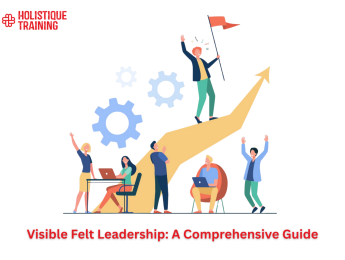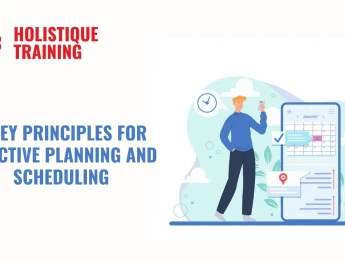- Table of Contents
- Introduction
- What Is DMAIC and What Is It Used For?
- What Are the 5 Steps of DMAIC?
- Define:
- Measure:
- Analyse:
- Improve:
- Control:
- Why Is the DMAIC Process Important?
- Structured Approach to Problem-Solving:
- Data-Driven Decision Making:
- Achievement of Measurable Results:
- Sustainable Improvement and Continual Excellence:
- Enhanced Customer Satisfaction and Value Creation:
- Alignment with Organisational Goals and Priorities:
- Facilitation of Cross-Functional Collaboration:
- Compliance with Quality Standards and Regulations:
- How to Use DMAIC
- Define:
- Measure:
- Analyse:
- Improve:
- Control:
- Applications of DMAIC
- DMAIC vs. DMADV
- DMAIC Process Example in the Healthcare Sector
- Define
- Measure
- Analyse
- Improve
- Control
- Why It’s Important to Earn the Lean Six Sigma Certification
- In Conclusion
Introduction
The DMAIC (Define, Measure, Analyze, Improve, Control) process is a fundamental methodology in Lean Six Sigma, aimed at improving processes by systematically identifying and eliminating defects. Widely used across industries, DMAIC provides a structured approach to problem-solving and continuous improvement. In this guide, we'll explore what DMAIC entails, its steps, applications, comparisons with DMADV, sector-specific examples, and the significance of Lean Six Sigma certification.
What Is DMAIC and What Is It Used For?
DMAIC is an acronym that stands for Define, Measure, Analyze, Improve, and Control. It is a structured, data-driven methodology used to improve processes, products, or services by identifying and eliminating defects or problems. Originating from the principles of Six Sigma , DMAIC aims to achieve measurable and sustainable results by following a systematic approach to problem-solving and process improvement.
What Are the 5 Steps of DMAIC?
Define:
- The Define phase sets the foundation for the entire DMAIC process. It begins with clearly defining the problem or opportunity for improvement. This involves not only identifying the specific issue but also establishing the project goals, scope, and stakeholders' expectations. Effective project definition ensures that everyone involved understands the purpose and boundaries of the improvement initiative.
- Key Activities in the Define Phase:
- Problem Statement: Articulate the problem succinctly and precisely. For example, in manufacturing, there could be excessive defects in a product line, impacting overall quality.
- Project Goals: Define success. Goals should be specific, measurable, achievable, relevant, and time-bound (SMART).
- Scope: Determine the boundaries of the project. This includes identifying which processes or areas will be targeted for improvement and which will not.
- Stakeholder Analysis: Identify stakeholders who will be impacted by or have influence over the project. Understand their expectations and concerns to ensure alignment and support throughout the DMAIC process.
- Importance of the Define Phase:
- Alignment: Ensures the project aligns with organisational objectives and addresses critical issues.
- Focus: Clarifies where to direct resources and efforts throughout the DMAIC process.
- Communication: Establishes a common understanding among team members and stakeholders, fostering collaboration and commitment to achieving project goals.
Measure:
- In the Measure phase, the focus shifts to gathering relevant data and metrics to assess the current state of the process quantitatively. This step is crucial for establishing a baseline performance level, which serves as a reference point for evaluating improvements made later in the DMAIC process.
- Key Activities in the Measure Phase:
- Data Collection: Identify and collect data related to the process under review. This may include process cycle times, defect rates, customer complaints, or any other metrics relevant to the problem at hand.
- Baseline Establishment: Analyse the collected data to establish the current performance baseline. This involves calculating key performance indicators (KPIs) and conducting statistical analyses to understand variability and trends.
- Data Verification: Ensure the accuracy and reliability of collected data through validation processes and cross-checks with multiple sources if necessary.
- Process Mapping: Create process maps or flowcharts to visualise the process's sequence of activities, inputs, and outputs. This aids in identifying potential areas of inefficiency or waste.
- Importance of the Measure Phase:
- Fact-Based Decision Making: Provides objective data and insights into the current state of the process, reducing reliance on assumptions or subjective opinions.
- Baseline Comparison: Establishes a benchmark against which future improvements can be measured, enabling progress tracking and performance evaluation.
- Identifying Variability: Highlights sources of variation within the process that may contribute to defects or inefficiencies, guiding subsequent analysis and improvement efforts.
Analyse:
- The Analyze phase involves digging deeper into the data collected during the Measure phase to identify root causes contributing to the problem or variation within the process. This phase employs various analytical tools and techniques to investigate and understand the underlying factors impacting process performance systematically.
- Key Activities in the Analyze Phase:
- Root Cause Analysis: Use techniques such as Fishbone Diagrams (Ishikawa– see below ), 5 Whys, or Pareto Analysis to identify primary causes of problems or variations.
- Statistical Analysis: Apply statistical methods such as hypothesis testing, regression analysis, or control charts to validate hypotheses and uncover patterns or correlations in the data.
- Process Capability Analysis: Assess the capability of the current process to meet customer requirements and identify areas for improvement.
- Risk Assessment: Evaluate potential risks associated with identified root causes or proposed solutions to mitigate future issues.
- Importance of the Analyse Phase:
- Precision in Problem Identification: Pinpoints specific factors contributing to defects or inefficiencies, guiding targeted improvement efforts.
- Evidence-Based Solutions: Ensures that improvement initiatives are grounded in data-driven insights, increasing the likelihood of successful outcomes.
- Preventive Action: Identifies current issues and potential risks or future challenges, enabling proactive mitigation strategies.
Improve:
- In the Improve phase, the focus shifts to developing and implementing solutions that address the root causes identified during the Analyze phase. This step involves brainstorming ideas, testing potential solutions, and implementing changes designed to optimise process performance and achieve measurable improvements.
- Key Activities in the Improve Phase:
- Solution Generation: Brainstorm and evaluate potential solutions to address identified root causes. Encourage creativity and innovation in exploring different approaches.
- Pilot Testing: Conduct small-scale trials or pilots of selected solutions to assess feasibility and effectiveness before full-scale implementation.
- Implementation Planning: Develop a detailed implementation plan outlining steps, responsibilities, timelines, and resource requirements for deploying improvements.
- Change Management: Anticipate and address resistance to change by engaging stakeholders, communicating benefits, and providing necessary training or support.
- Importance of the Improve Phase:
- Optimised Performance: Implements changes directly targeting identified root causes, leading to tangible improvements in process efficiency, quality, or customer satisfaction.
- Innovation and Adaptation: Encourages continuous learning and adaptation by testing new ideas and refining approaches based on real-world feedback.
- Sustainable Results: Establishes a foundation for long-term success by embedding improvements into daily operations and ensuring organisational readiness for change.
Control:
- The Control phase ensures that improvements implemented during the improvement phase are sustained over time. This involves establishing monitoring systems, implementing standardised procedures, and providing ongoing training to prevent regression to previous performance levels.
- Key Activities in the Control Phase:
- Performance Monitoring: Establish metrics and monitoring systems to track key performance indicators (KPIs) and verify sustained improvements.
Table: KPIs for DMAIC
- Process Standardisation: Document revised procedures and best practices to ensure consistency and reliability in process execution.
- Training and Capability Building: Provide training to personnel involved in the process to ensure understanding of new procedures and methodologies.
- Continuous Improvement: Foster a culture of continuous improvement by encouraging feedback, conducting regular reviews, and adapting to changing conditions or requirements.
- Importance of the Control Phase:
- Sustained Benefits: Prevents backsliding by maintaining focus on performance metrics and promptly addressing deviations from expected outcomes.
- Adaptability: Allows for adjustments and refinements to implemented solutions based on real-world feedback and evolving organisational needs.
- Organisational Learning: Promotes knowledge sharing and team capability building, enhancing overall process maturity and resilience.
The DMAIC process provides a structured and systematic approach to problem-solving and process improvement, ensuring organisations can achieve sustainable results and maintain competitive advantage. By meticulously following each phase—Define, Measure, Analyze, Improve, and Control—businesses can identify inefficiencies, eliminate defects, and enhance overall operational performance. Integrating DMAIC with Lean Six Sigma principles empowers organisations to deliver consistent quality, reduce costs, and exceed customer expectations in today's competitive market landscape.
Why Is the DMAIC Process Important?
The DMAIC (Define, Measure, Analyze, Improve, Control) process is a cornerstone of Lean Six Sigma methodology, designed to improve processes and drive organisational success systematically. Its importance lies in several key aspects that contribute to operational excellence and sustainable business growth:
Structured Approach to Problem-Solving:
DMAIC provides a clear and structured framework for tackling complex problems and challenges within an organisation. By following defined phases—Define, Measure, Analyze, Improve, and Control—teams can methodically identify issues, gather relevant data, analyse root causes, implement solutions, and ensure sustained improvements. This structured approach minimises guesswork and subjectivity, leading to more effective and efficient problem resolution.
Data-Driven Decision Making:
Central to the DMAIC process is its reliance on data and metrics to guide decision-making. During the Measure and Analyze phases, teams collect and analyse quantitative and qualitative data to understand the current state of processes, identify patterns, and pinpoint root causes of inefficiencies or defects. This empirical approach validates assumptions and provides objective insights that inform strategic decisions and improvement initiatives.
Achievement of Measurable Results:
DMAIC is focused on delivering measurable and tangible results that can be quantified in terms of improved process performance, reduced defects, enhanced quality, or increased efficiency. By setting clear goals and performance metrics in the Define phase and benchmarking against these metrics throughout the process, organisations can track progress, evaluate success, and demonstrate the impact of improvements on stakeholders and customers.
Sustainable Improvement and Continual Excellence:
One of DMAIC's core objectives is to ensure that process improvements are not temporary fixes but sustainable enhancements that drive long-term success. The Control phase emphasises implementing robust monitoring and control mechanisms to sustain long-term gains. This proactive approach prevents regression to previous performance levels and fosters a culture of continuous improvement within the organisation.
Enhanced Customer Satisfaction and Value Creation:
DMAIC directly enhances customer satisfaction and delivers greater value to stakeholders by reducing defects, minimising variation, and optimising processes. Improved product or service quality, shorter lead times, and consistent performance reliability increase customer loyalty, retention, and positive brand reputation. Organisations prioritising DMAIC are better positioned to meet and exceed customer expectations in competitive markets.
Alignment with Organisational Goals and Priorities:
The Define phase of DMAIC ensures alignment with strategic organisational goals and priorities. By clearly defining project scopes, objectives, and stakeholder expectations upfront, DMAIC initiatives are more likely to address critical business challenges and contribute to overarching organisational objectives such as cost reduction, operational efficiency, innovation, or regulatory compliance.
Facilitation of Cross-Functional Collaboration:
DMAIC projects often require collaboration across different functions and departments within an organisation. The structured nature of DMAIC encourages cross-functional teams to work together towards common goals, leveraging diverse perspectives, expertise, and resources. This collaborative approach accelerates problem-solving and fosters a culture of teamwork, knowledge sharing, and organisational alignment.
Compliance with Quality Standards and Regulations:
DMAIC offers a systematic approach to ensuring compliance and continuous improvement for industries operating under stringent quality standards or regulatory requirements. By identifying and addressing process inefficiencies or non-conformities early in the DMAIC cycle, organisations can mitigate risks, avoid costly penalties, and more effectively maintain regulatory compliance.
In summary, the DMAIC process drives organisational excellence, fosters innovation, and achieves sustainable business outcomes. By embracing DMAIC, organisations can systematically identify opportunities for improvement, enhance operational efficiency, deliver superior-quality products or services, and ultimately gain a competitive edge in the marketplace. Its structured methodology, emphasis on data-driven decision-making, and focus on continuous improvement make DMAIC a valuable tool for organisations committed to achieving operational excellence and exceeding customer expectations.
How to Use DMAIC
The DMAIC (Define, Measure, Analyze, Improve, Control) process is a versatile methodology that organisations can apply across various contexts to drive process improvement, innovation, and organisational excellence. Here’s a comprehensive guide on how to effectively utilise DMAIC:
Define:
- Clarify Objectives: Begin by clearly defining the objectives and scope of your DMAIC initiative. Whether you're aiming to improve a specific process, enhance product quality, optimise service delivery, or achieve other strategic goals, articulate the desired outcomes and align them with organisational priorities.
- Identify Stakeholders: Engage key stakeholders and team members early in the process to ensure alignment and gather diverse perspectives. Understanding stakeholder expectations and requirements is essential for defining project boundaries and ensuring project success.
Measure:
- Collect Data: Gather relevant data and metrics to quantify the current state of the process or problem area. This involves identifying key performance indicators (KPIs), collecting data points, and establishing a baseline against which improvements can be measured.
- Assess Performance: Evaluate process performance based on collected data to identify areas of inefficiency, variability, or opportunities for enhancement. Measurement is critical for understanding the magnitude of the problem and setting realistic improvement targets.
Analyse:
- Root Cause Analysis: Use analytical tools and techniques such as statistical analysis, root cause analysis (e.g., Fishbone Diagram, 5 Whys), and process mapping to identify underlying factors contributing to issues or variations within the process.
- Data Interpretation: Interpret data findings to uncover patterns, trends, and correlations that provide insights into the root causes of problems or areas for improvement. Analytical rigour ensures that decisions are based on empirical evidence rather than assumptions.
Improve:
- Generate Solutions: Brainstorm potential solutions or interventions to address identified root causes and improve process performance. Encourage creativity and innovation in developing strategies that align with project goals and stakeholder expectations.
- Pilot Testing: Implement small-scale trials or prototypes of selected solutions to assess feasibility, identify potential challenges, and refine approaches before full-scale implementation.
- Implementation Planning: Develop a detailed implementation plan outlining steps, timelines, resource requirements, and responsibilities for effectively deploying improvements.
Control:
- Establish Controls: Establish monitoring systems, standardised procedures, and performance metrics to sustain improvements over time. Continuously monitor process performance to detect deviations, address issues promptly, and maintain gains achieved through the Improve phase.
- Training and Capability Building: Provide training and development opportunities to equip team members with the skills and knowledge necessary to support ongoing process improvement initiatives. Foster a culture of accountability, ownership, and continuous learning within the organisation.
Applications of DMAIC
- Quality Management: Enhance product or service quality by reducing defects, minimising variability, and meeting customer expectations consistently.
- Operational Efficiency: Streamline workflows, optimise resource utilisation, and reduce cycle times to improve overall operational efficiency.
- Customer Satisfaction: Identify and address pain points in customer interactions or service delivery processes to enhance customer satisfaction and loyalty.
- Cost Reduction: Identify and eliminate waste, inefficiencies, and non-value-added activities to achieve cost savings and improve profitability.
- Innovation and New Product Development: Use DMAIC principles to design and develop new products or processes that effectively meet market demands and customer requirements.
- Regulatory Compliance: Continuously improve processes and implement best practices to ensure compliance with industry standards, regulations, and quality management systems.
The DMAIC process provides a structured and systematic approach to achieving process improvement, innovation, and organisational excellence across diverse industries and functions. By following the Define, Measure, Analyze, Improve, and Control phases, organisations can identify opportunities for enhancement, implement effective solutions, and sustain improvements over time. Embracing DMAIC not only drives operational efficiency and quality but also fosters a culture of continuous improvement and excellence within the organisation.
DMAIC vs. DMADV
While DMAIC is used for improving existing processes, DMADV (Define, Measure, Analyze, Design, Verify) is employed for designing new processes or products. The primary difference lies in their application:
- DMAIC: Focuses on improving existing processes by eliminating defects and inefficiencies.
Aspect | DMAIC | DMADV |
Purpose | Improve existing processes | Develop new processes or products |
Focus | Problem-solving | Design and innovation |
Steps | Define, Measure, Analyse, Improve, Control | Define, Measure, Analyse, Design, Verify |
Application | Applicable to process improvement | Used for new product or process development |
Typical Industry Use | Manufacturing, services, healthcare | Design engineering, product development |
Table: Comparing DMAIC & DMADV
- DMADV: Aims to design new processes or products that meet customer requirements and are robust from inception.
Both methodologies are integral to Lean Six Sigma and are chosen based on whether the goal is to enhance or develop new processes.
DMAIC Process Example in the Healthcare Sector
In healthcare, efficient processes are crucial for delivering quality patient care, optimising resource utilisation, and improving overall patient outcomes. Let's explore how the DMAIC (Define, Measure, Analyze, Improve, Control) process can be applied to address a common issue: reducing patient wait times in a hospital emergency department.
Define
Problem Statement: The emergency department (ED) of a hospital is experiencing prolonged patient wait times, leading to dissatisfaction among patients and caregivers. The current average wait time from triage to treatment exceeds industry standards, impacting patient care quality and staff efficiency.
Project Goals:
- Reduce patient wait times from triage to treatment by 30% within six months.
- Improve patient satisfaction scores related to wait times by 20 points.
- Enhance staff satisfaction by optimising workload distribution and reducing stress associated with overcrowding.
Scope: Focus on optimising the patient flow process from initial triage assessment to treatment initiation within the ED. Include collaboration with nursing staff, physicians, support services (such as radiology and laboratory), and administrative personnel involved in patient care delivery.
Stakeholders: Engage ED staff (nurses, physicians, technicians), hospital administrators, patient representatives, and IT support for data analytics and system integration.
Measure
Data Collection:
- Current Wait Times: Gather data on average wait times from patient arrival to triage, triage to physician assessment, and assessment to treatment initiation.
- Patient Flow Metrics: Track patient throughput metrics, including admission rates, discharge rates, and turnaround times for diagnostic tests.
- Staff Workload: Assess staffing levels during peak and off-peak hours, evaluate nurse-to-patient ratios, and analyse workflow efficiency.
Performance Baseline: Establish baseline metrics to quantify current performance levels and identify areas for improvement. For instance, the average wait time from triage to treatment initiation is currently 60 minutes, and it varies depending on patient acuity and resource availability.
Analyse
Root Cause Analysis:
- Process Mapping: Create a process map outlining each step in the patient journey from arrival to discharge. Identify bottlenecks, redundancies, and delays in the triage and treatment process.
- Staff Interviews and Feedback: Interview ED staff to gather insights into operational challenges, communication gaps, and resource constraints affecting patient flow.
- Data Analysis: Utilise statistical tools (e.g., Pareto charts, cause-and-effect diagrams) to analyse factors contributing to prolonged wait times, such as high patient volume during peak hours, inefficient triage protocols, or delays in diagnostic testing results.
Key Findings: Root causes identified include inadequate staffing during peak hours, inconsistent adherence to triage protocols, inefficient coordination between ED departments (e.g., radiology, laboratory), and delays in bed availability for admitted patients.
Improve
Solution Development:
- Staffing Optimization: Adjust staffing levels based on patient volume forecasts and peak hours. Implement cross-training programs to enhance staff flexibility and responsiveness during surges in patient demand.
- Triage Protocol Enhancement: Revise triage protocols to effectively prioritise patient acuity levels and streamline initial assessments. Introduce standardised assessment tools and decision-support systems to expedite triage processes.
- Process Redesign: Implement lean principles to streamline workflows, eliminate non-value-added activities, and improve communication between ED departments. For instance, establish dedicated communication channels for timely transmission of test results and patient status updates.
Pilot Testing: Conduct pilot tests of proposed interventions in a controlled environment within the ED. Evaluate the effectiveness of staffing adjustments, protocol enhancements, and process redesigns in reducing wait times and improving workflow efficiency.
Control
Implementation and Monitoring:
- Training and Implementation Support: Provide comprehensive training sessions for ED staff on new protocols, procedures, and technology enhancements. Monitor staff adherence to standardised processes through regular audits and performance reviews.
- Performance Metrics: Establish ongoing monitoring systems to track key performance indicators (KPIs) related to patient wait times, staff workload, and patient satisfaction scores. Utilise dashboard analytics and real-time reporting to identify trends, address emerging issues, and sustain improvements over time.
- Continuous Improvement: Foster a culture of continuous improvement by conducting regular performance reviews, soliciting feedback from patients and staff, and adapting strategies based on evolving patient care needs and industry best practices.
By applying the DMAIC process, the hospital successfully reduces patient wait times in the emergency department, improves patient and staff satisfaction, and enhances overall operational efficiency. The systematic approach of Define, Measure, Analyze, Improve, and Control ensures that improvements are data-driven, sustainable, and aligned with organisational goals. Healthcare organisations can leverage DMAIC to address complex challenges, optimise resource utilisation, and deliver high-quality patient care in today's demanding healthcare environment.
Why It’s Important to Earn the Lean Six Sigma Certification
Earning a Lean Six Sigma certification, such as Green Belt or Black Belt, validates proficiency in DMAIC and other methodologies. Benefits include:
- Career Advancement: Enhances career prospects by demonstrating expertise in process improvement and problem-solving.
- Organisational Impact: Enables individuals to lead or support projects that drive significant cost savings, quality improvements, and operational efficiencies.
- Skill Development: Equips professionals with advanced analytical and leadership skills crucial for driving organisational change and continuous improvement initiatives.
In Conclusion
In conclusion, the DMAIC process is a robust framework empowering organisations to achieve operational excellence and consistently deliver high-quality products and services. By systematically applying DMAIC's structured approach and harnessing data-driven insights, businesses can effectively pinpoint and eliminate inefficiencies, thereby enhancing customer satisfaction and securing a competitive advantage in today's dynamic market environment. Pursuing Lean Six Sigma certification is beneficial and essential for professionals aspiring to excel in process improvement and contribute significantly to organisational success. It equips individuals with the tools and methodologies needed to lead impactful change initiatives, drive efficiency gains, and foster a culture of continuous improvement within healthcare and beyond.
Additionally, mastering Lean Six Sigma in healthcare through our comprehensive course provides practical skills and knowledge essential for navigating the unique challenges of the healthcare sector. From reducing wait times in emergency departments to improving patient outcomes and operational efficiency, Lean Six Sigma certification empowers healthcare professionals to lead transformative improvements that positively impact both patient care and organisational performance.
This guide has equipped you with a thorough understanding of DMAIC's application, its strategic advantages over DMADV, and a real-world healthcare example, underscoring the profound benefits of integrating Lean Six Sigma principles into practice. Embrace these insights to drive meaningful change and sustainable success across diverse industries and organisational settings.
























